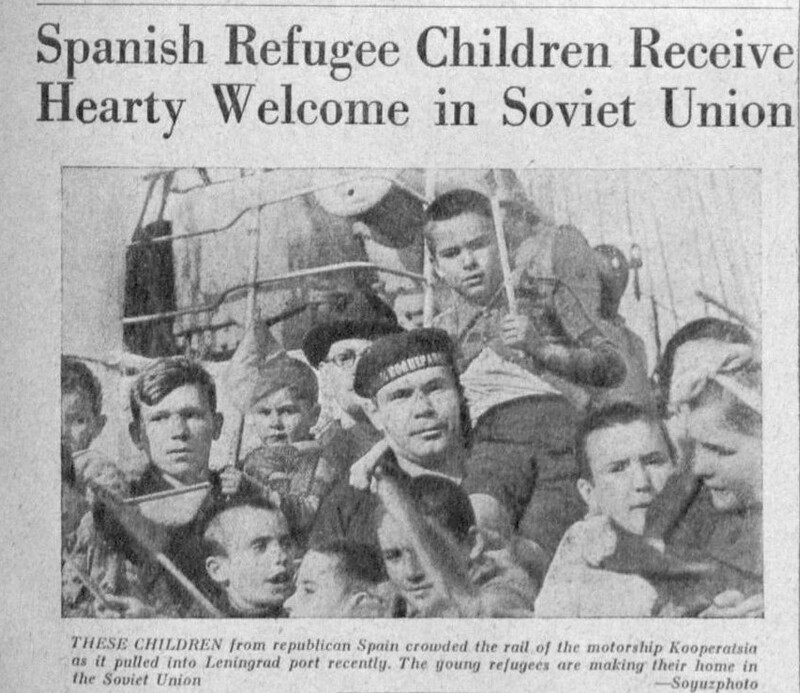Overview: Our New Spanish Friends
The Spanish Civil, officially beginning in 1936, was a multi-faceted conflict that put Spanish citizens of varying political, class, and religious affiliations in danger. While many adults fled the country because of these dangers, special efforts were made to evacuate children. Over 35,000 children were sent to European countries, Mexico, and the USSR.
While many nations were hesitant to take in the refugees, the USSR was quick to volunteer, accepting around 3,000 children. State officials saw this as an important humanitarian effort in line with its goals of international communism, but also as a tool in setting an example for western nations still distrustful of the Soviet Union and its validity as a state.
The Spanish children were welcomed into the Soviet Union with open arms, being met by a crowd of cheering Komsomol and Young Pioneer members. The children lived at various camps and children’s houses where they were given a Spanish education that focused on the shared patriotism between the Soviet Union and Spain taught in their native languages. They were provided with after school programs and study groups that focused on traditional Spanish values, while also learning about Soviet culture.
This lifestyle dramatically shifted in 1939 when Franciso Franco and the Nationalists won the Spanish Civil War. Now refugee children were unable to return home or risk consequences from the newly established dictatorship. Their Soviet education now focused heavily on learning Russian and long-term cultural immersion.
The situation for these children continued to escalate in 1941 as the Nazi party began invading the USSR and the children were evacuated to the interior of the USSR. Again, they were forced to live through the hardships of war, some of the older teens even volunteered to be drafted into the Soviet military.
After WWII, the children moved back to Moscow to finish their education, pursue higher education, or enter the Soviet workforce. Some traveled to Cuba to aid in the establishment of Communism there, while others chose to return home to Spain. However, much had changed in the time since these children last saw their homeland. While some were able to blend their love for both homelands, some were unable to continue living in Spain and would return to the Soviet Union.
Additional Information:
For more information on the migration of Spanish children to the USSR, see Dr. Karl Qualls’ webinar on his 2019 book Stalin's Niños: Educating Spanish Civil War Refugee Children in the Soviet Union, 1937-1951 https://scholar.dickinson.edu/faculty_publications/1360/
For a general history of the Soviet and Spanish relations during the Spanish CIvil War, see Daniel Kowalsky’s Stalin and the Spanish Civil War http://www.gutenberg-e.org/kod01/kod01.html

